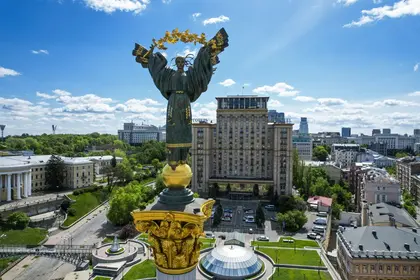This weekend, May 27 and 28, Ukraine’s capital is celebrating Kyiv Day, which commemorates the founding of this amazing European city on the Dnipro – a city full of history and currently the center of international attention.
Kyiv is the soul of Ukraine. Tradition dates its founding to 482 AD, and Kyiv Day was established in 1982 on what was then declared to be its 1,500th anniversary. The holiday is now celebrated every last weekend in May.
JOIN US ON TELEGRAM
Follow our coverage of the war on the @Kyivpost_official.
For almost 300 years Kyiv was the center of Kyivan Rus, a mighty medieval Slavic state. Its first rulers were Nordic Vikings and in 988 Christianity was adopted its religion. The territory of this vast state spread from the Western Buh to the Volga, and from the Black Sea to the Baltic Sea, and the daughters of one its most famous rulers – Prince Yaroslav the Wise (c. 978–1054), married the kings of France, Hungary, Norway.
We can only imagine what Kyiv would have become had it not been for the repeated sacks and invasions that stunted its growth for over 600 years.
Most notably, the roaming Mongol Tatars razed the city in 1240.
But even before the Mongol hordes appeared, the city was sacked in 1169 by Andrey Bogolyubsky, the Prince of Vladimir-Sudzal (near the village that would later become Moscow, incidentally, first mentioned in 1147).
In 1648, the Ukrainian Cossack leader or Hetman, Bohdan Khmelnystky symbolically entered Kyiv after his victories over Polish armies and was hailed a latter-day prince of Rus by the Patriarch of Jerusalem, who was there at the time.

Putin Says Again He‘s Ready for Compromise - On His Terms, Of Course
By this time, Kyiv not only was famous for its historical sites, such as the churches and Pechersk cave monastery or Lavra remaining from the Kyiv Rus period, but also the new center of learning that had appeared earlier in the seventeenth century in the Podil district – the famed Mohyla Academy.
Kyiv was fought over in 1917-20, with Ukrainians proclaiming an independent democratic republic there in January 1918, but eventually being defeated by the Russian Red Bolshevik forces.
Repression and acts of mass destruction followed during the Soviet period, especially in the 1930s when the communists tore down some of the city’s most famous ancient churches and killed many of the intelligentsia. And then more destruction followed during the Second World War.
Ironically, the Soviets did far more damage to the center of the city than the Nazi invaders. Before the Red Army withdrew from the city in September 1941, it mined the city’s main thoroughfare, Khreshchatyk, as part of a scorched-earth policy to hinder the Nazis. The explosives were detonated from a distance; more than 300 buildings were destroyed, and hundreds killed, Ukrainian civilians as well as German military.
Today Kyiv remains a modern, lively, and colorful European city even as it faces regular attacks from Russian missiles and drones. Defending itself, it protects the rest of the continent from Russia’s imperialist aggression.
Because of this, Kyiv Day will have special meaning this year for the heroic city.
Every last weekend in May people can expect to see outdoor performances, open-air concerts, sporting events, charity runs, marathons, cultural exhibits, and even fashion shows. Otherwise, Kyiv residents can just relax, explore new places in the city, or enjoy the early summer weather with the lilacs and horse chestnuts in bloom.
Because of the war, the city administration is not planning any mass events for Kyiv residents, but there will still be something interesting for visitors this year.
On May 27, for example, at 7:00 p.m., the “Rock Ballads in the Garden” concert will be held in the Hryshko National Botanical Garden. The most popular hits of U2, Queen, Nirvana and others will be playing. For Kyiv Day, the city administration has prepared a number of free city tours: namely, "Alleys of Kyiv" and "Unusual Kyiv – from past to the present."
But if you prefer quiet entertainment, you can travel to the amazing and unique sights in Kyiv. The most visited tourist attractions in the capital remain the Podil district, the Pechersk-Lavra Monastery of the Caves, Saint Sophia Cathedral, Khreshchatyk and Mariinsky Park.
Despite the war – indeed, as a result of the war – the good vibrations in Kyiv will charge locals and visitors enjoying pleasant weather and wonderful views and imbue them with the indomitable spirit of resistance.
You can also highlight the text and press Ctrl + Enter






